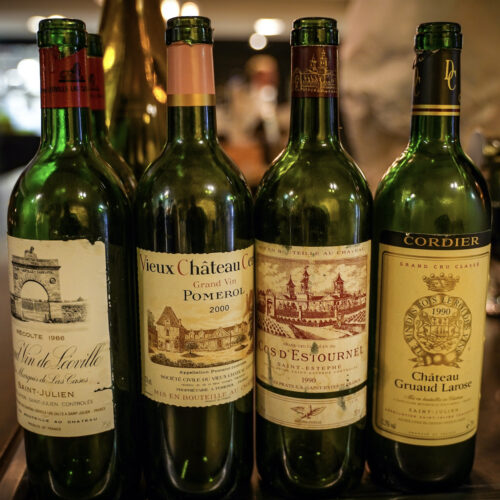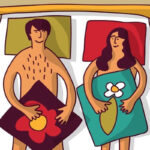 Passions – The Wines and Travels of Thomas Jefferson – by James M Gabler
Passions – The Wines and Travels of Thomas Jefferson – by James M Gabler
Bacchus Press 1995 318 pages Hardback ISBN: 978-0961352530
THE BOOK I most enjoyed reading last year and into which I frequently dip, was ‘Passions – The Wines and Travels of Thomas Jefferson.’ Written by James M. Gabler, the hardback edition was first published in 1995 by Bacchus Press Ltd. It is a book which will bring joy to any oenophile and explains in detail how Thomas Jefferson, a Founding Father, Secretary of State and 3rd President of the United States, became, arguably, America’s first wine connoisseur. He lived to the ripe old age of 83, dying in Virginia in 1826. He is buried at his home in Monticello.
Jefferson was the third child of ten, born to a planter and surveyor who had emigrated from Wales to Virginia. He was the principal author of the Declaration of Independence. A talented linguist and academic, Jefferson spent a five-year posting in Paris as US Minister to France from 1784 to 1789, where he became a connoisseur of good food and wine. He prided himself on an intensive study of plants and viniculture and was a considerable expert, enjoying three or four small glasses of wine with his dinner every day and ‘not a drop at any other time’.
Even before going to France, he had been renowned for throwing lavish dinner parties at his 5,000-acre Virginian plantation, Monticello. Jefferson had more than 100 slaves at Monticello, where his beautiful housekeeper, the slave Sally Hemings, together with his faithful butler Burrell Colbert, ruled over the 15 house-slaves, almost all members of the Hemings family. As a teenager, Sally had accompanied the newly widowed Jefferson to Paris. She became pregnant by Jefferson at the age of 16 in Paris and she eventually bore him six children, four of whom survived into adulthood. Jefferson also had six legitimate children by his wife Martha, who died, aged only 33, shortly after giving birth to their last child. Only two of his legitimate children, both girls, survived into adulthood and both always denied their father had sired any children by his slave Sally Hemings!
In Paris, Jefferson took up residence in an imposing villa in the Champs-Élysées, complete with stables and a large garden where he grew American crops like corn, sweet potatoes and watermelons. He placed his daughter Patsy in a convent school and arranged French cooking lessons for his slave James Hemings. He travelled extensively across the European continent, visiting the vineyards of Burgundy, Cote Rotie, Hermitage, Bordeaux, Champagne, Provence and even risked his life venturing over the bandit infested Alps, into Italy on the back of a mule. His wine diaries covered extensive trips along the French and Italian Rivieras, through Languedoc on the Canal-du-Midi and down the Rhine with tastings at famous German vineyards. His travels also took him to cities like London, Amsterdam, Frankfurt, Heidelberg and Strasbourg, where his musings on the quality of food and wine matched his interest in local and national politics.
The astonishing revelations in this book show how Jefferson’s favourite wines have become the most celebrated fine wines of today. Touring the Duchy of Burgundy in his own carriage drawn by three horses, Jefferson noted the most celebrated wines were to be found in the vineyards of Vougeot, Romanée, Vosne, Nuits, Beaune, Pommard, Volnay, Meursault and Montrachet.
He waxed eloquently about Chambertin from the village of Gevrey-Chambertin in Côte de Nuits, which he described as one of the best French Burgundies. Gevrey-Chambertin is the largest wine-producing village in Burgundy’s Côte d’Or. Located in the far north of the Côtes de Nuits above Morey St Denis, classic Gevrey Chambertin is typically deeper in colour, firmer in body and more tannic in structure than most red Burgundy. The best can develop into the richest, most complete and long-lived Pinot Noir in the world. Jefferson would frequently order cases of these wines to be shipped back to his home Monticello in Charlottesville, Virginia, usually ordering his wine to be delivered in bottles, which increased the price substantially, but helped to maintain the quality.
In the Rhone Valley, Jefferson wrote with great passion about the dry, white wine from Hermitage, made from the Roussane and Marsanne grapes, from the hills surrounding the town of Tain l’Hermitage, south of Lyon. He described these white wines as having the aromas of honeysuckle, tropical fruit and earthy minerals, and noted that they may be cellared for up to 15 years. In Bordeaux he wrote enthusiastically about the sweet wines of Sauternes, Preignac and Barsac and the great claret of Château Haut-Brion, sending his brother-in-law, Francis Eppes, six dozen bottles of the 1784 vintage. He also ordered 252 bottles of Château Margaux, describing the dark, complex wine as coming from one of “four vineyards of first quality”.
In Italy, Jefferson stayed for two days in the Hôtel d’Angleterre, the best hotel, where he encountered for the first time the precursor of today’s Nebbiolo grape, which makes some of Italy’s greatest wines such as Barolo, Barbaresco, Gattinara and Ghemme. He described the “Nebiule” wine as being “about as sweet as the silky Madeira, as astringent on the palate as Bordeaux and as brisk as Champagne. It is a pleasing wine.” In Tuscany he discovered the alure of the rich, red, aromatic, Vino Nobile di Montepulciano, one of the great Sangiovese wines. It comes from the vineyards that surround Montepulciano, a picturesque hill town 25 miles (40 km) southeast of Siena in southeastern Tuscany where the wine tastes full of summer fruits, strawberries and rose essence with a sumptuous palate and exceptional balance.
One of Jefferson’s best-loved wines was the unusual bubble-free, or ‘non-mousseux’ (still wine) from the Champagne region of France. He was the only person importing this type of wine into America at the time and persuaded President George Washington to purchase a quantity.
‘Passions – The Wines and Travels of Thomas Jefferson’ is a fascinating book. It retraces the steps of one of America’s most gifted presidents through Europe and through the turbulence of revolutionary France. The author has provided us with a compelling historical account of the times, while peppering the tale with lavish reports of some of the world’s greatest wines. Available from Amazon
If you appreciated this article please share and follow us on Twitter here – and like and comment on facebook here. ThinkScotland is not for profit and relies on donations – You can help support ThinkScotland publishing these articles by making a donation here.








